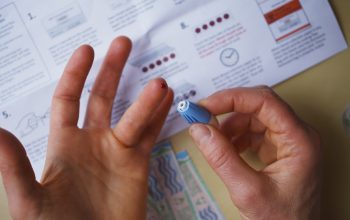When people eat regular table sugar, called sucrose, the body digests it into fructose and glucose. Glucose is a simple sugar that the body uses to supply cells with energy. The body normally protects itself from the damaging effects of high glucose levels by neutralizing the glucose it does not need. Insulin is the main substance used to prevent blood glucose levels from getting too high, but people who have diabetes may have resistance to the effects of insulin or may not produce insulin at all. This is how diabetes and glucose are related Insulineresistentie.
There are two types of diabetes, type 1 and type 2. In type 1 diabetes, the sufferer does not produce insulin at all. People who have type 2 diabetes produce insulin, but their bodies don’t respond to it as a healthy body would. In both types, the relationship between diabetes and glucose is direct. Not taken care diabetes results in blood sugar to increase to harmful degrees.
Diabetes and glucose grades can be regulated with diet, workout, or pill. How it is controlled is sure of on the harshness and type of infection. Species who have category 1 diabetes must always take insulin because their bodies simply don’t make it. Control of species 2 diabetes may never pertain to the use of insulin medication if the patient compile with prescription drugs and lifestyle improvement.

There is a direct correlation between diabetes and glucose tolerance. Glucose tolerance is sometimes tested as part of the diabetes diagnosis process. The patient drinks a solution of sugar and water immediately after testing the blood sugar level. Blood sugar is tested two to three hours after drinking the solution. A blood sugar level between 99 and 199 could indicate prediabetes and levels of 200 and above require a clear diagnosis of diabetes.
Hemoglobin A1C is a test that indicates the average blood glucose levels over the three months prior to the test being performed. Most professionals use hemoglobin A1C to determine the effectiveness of the current treatment in controlling diabetes and glucose. Patients need to perform this test several times a year to be sure the prescribed treatment is still working.
To determine the effectiveness of the treatment regimen, patients generally check their blood sugar levels at least once a day with a blood sugar meter. Glucose levels may be at their ideal levels, but the levels can change wildly over the day.




